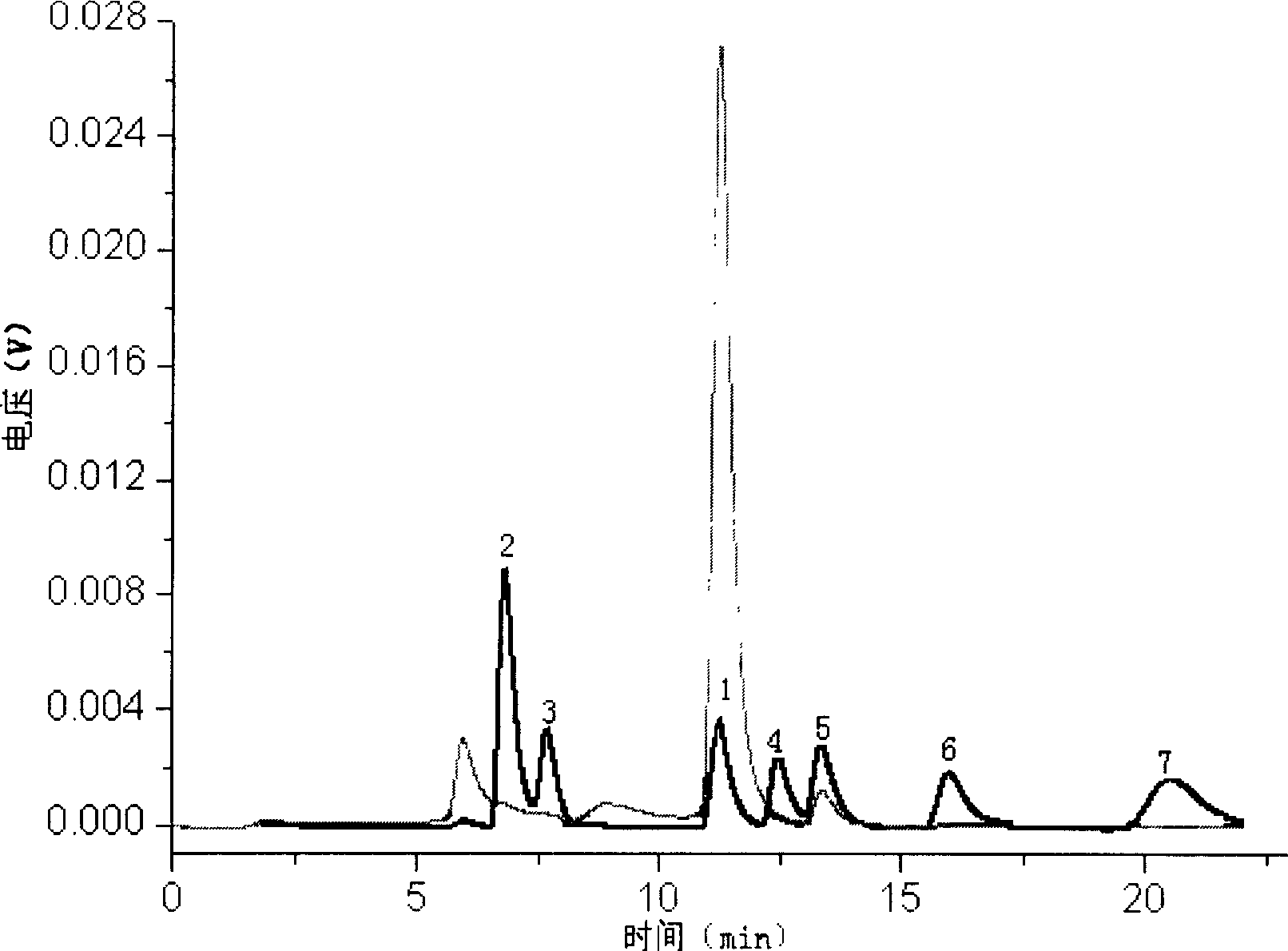Open type method for producing fermentated lacitc acid and feedstuff using kitchen residue
An open fermentation and kitchen waste technology, applied to animal feed, animal feed, solid waste removal, etc., can solve the problems of low protein content, complicated process, low lactic acid production, etc.
- Summary
- Abstract
- Description
- Claims
- Application Information
AI Technical Summary
Problems solved by technology
Method used
Image
Examples
specific Embodiment approach 1
[0005] Specific Embodiment 1: In this embodiment, lactic acid is produced by open-type fermentation of food waste through the following steps: (1) filtering and pulverizing the food waste; (2) adding solid food waste to the pulverized solid food waste 1-3 times the quality of water; (3) Add cellulase and amylase to the solid-liquid mixed kitchen waste, add 10-20kU of cellulase and 5-10kU of amylase per 100g of solid-liquid mixed kitchen waste (4) The solid-liquid mixed kitchen waste added with cellulase and amylase is fermented intermittently for 20-30 hours under the condition of 35-50°C, and calcium carbonate is added to keep the solid-liquid mixed kitchen waste The pH value is 5-6; (5) solid-liquid separation, and then purifying the lactic acid in the fermentation broth to obtain lactic acid.
[0006] In this embodiment, kitchen waste includes leftovers and vegetables and fruit leftovers discarded by households and restaurants; whey from milk factories, distiller's grains f...
specific Embodiment approach 2
[0010] Specific embodiment 2: The difference between this embodiment and specific embodiment 1 is: Step (2) Add water with 1.2 to 2.8 times the mass of solid food waste into the pulverized solid food waste. Other steps are the same as those in Embodiment 1.
specific Embodiment approach 3
[0011] Specific embodiment three: the difference between this embodiment and specific embodiment one or two is: the water that adds in the step (two) is tap water, kitchen waste filtrate or dining room, canteen waste water. Other steps are the same as those in Embodiment 1 or 2.
PUM
 Login to View More
Login to View More Abstract
Description
Claims
Application Information
 Login to View More
Login to View More - R&D
- Intellectual Property
- Life Sciences
- Materials
- Tech Scout
- Unparalleled Data Quality
- Higher Quality Content
- 60% Fewer Hallucinations
Browse by: Latest US Patents, China's latest patents, Technical Efficacy Thesaurus, Application Domain, Technology Topic, Popular Technical Reports.
© 2025 PatSnap. All rights reserved.Legal|Privacy policy|Modern Slavery Act Transparency Statement|Sitemap|About US| Contact US: help@patsnap.com

